All issues

Predecessor
Volume 84, Issue 10
Displaying 1-4 of 4 articles from this issue
- |<
- <
- 1
- >
- >|
Original Research Paper
-
Nobuo AKAGI, Shigeyuki YAGI, Hiroyuki NAKAZUMI2011Volume 84Issue 10 Pages 341-345
Published: October 20, 2011
Released on J-STAGE: January 20, 2012
JOURNAL FREE ACCESSConventional polarizing poly(ethylene terephthalate) (PET) films were manufactured from uniaxially super-extended PET films dyed using azo dichroic dyes with high dichroic ratio in a high-pressure dyeing process and their polarizing properties were investigated.
Molecular orbital calculations for commercially available disazo dichroic dyes predict their linear structures favor the alignment of the dye along the drawing direction of the PET.
Uniaxially super-extended PET films dyed by this process provide dichroic ratios as high as 7.86–10.2 and degrees of polarization as high as 89–98%. The optical anisotropy is strongly dependent on the molecular structure of the chromophore in the dye.
A polarizing PET film with x, y chromaticity coordinates of [0.31, 0.31] and degree of polarization of 99% was successfully manufactured from uniaxially super-extended PET film dyed with three kinds of azo dichroic dyes using this process and shows superior humidity resistance.View full abstractDownload PDF (878K)
Data
-
Osamu HARADA2011Volume 84Issue 10 Pages 346-350
Published: October 20, 2011
Released on J-STAGE: January 20, 2012
JOURNAL FREE ACCESSOur laboratory, responsible for color design and color development of coating materials, has gathered continuous data on automotive color trend in our own market research since 2000, which has taken an important role in the color development. Purpose of this research is to understand some movement to predict future color trend in the automotive market. Based on the results of our color research, such as futuristic concept cars in motor shows and cars currently on the market, we can gather some new inspiration for so-called advanced colors and also can develop such advanced colors for the new car models. Now, we conduct a report on a color research in an automotive market in China, which has grown to become the biggest market of new-car buyers. According to results of the research, conducted at the Shanghai Motor Show (April 2011), white is the most popular color choice for the concept cars. This trend was seen in other motor shows throughout the world. We have been researching the color popularity of the automobiles seen in cities such as Beijing, Shanghai and Guangzhou, as each city has its own distinct character. Nowadays, the areal differences in the color popularity have become less prominent as motorization progresses through. Fig. 2 Fullsize ImageView full abstractDownload PDF (2043K)
Fig. 2 Fullsize ImageView full abstractDownload PDF (2043K)
Serial Lecture
-
Hiroaki UCHIDA, Norio SUGIHARA2011Volume 84Issue 10 Pages 351-357
Published: October 20, 2011
Released on J-STAGE: January 20, 2012
JOURNAL FREE ACCESSIron oxide pigments, which are a typical class of mineral pigments, present various red, yellow and black hues depending on differences in composition and crystallographic structure and find various usages as colorants. In particular, iron oxides are used in cosmetics since they are stable and safe. However in recent years the customers demand for safety has continued to increase together with a desire for optional functions other than coloring. This review explains the history, manufacturing process and types of iron oxide pigments and introduces low impurity iron oxide, micaceous iron oxide, transparent iron oxide and low metameric yellow iron oxide as topics of recent interest in the cosmetics field.View full abstractDownload PDF (2295K)
Serial Lecture
-
Kuniyoshi HORIMOTO2011Volume 84Issue 10 Pages 358-362
Published: October 20, 2011
Released on J-STAGE: January 20, 2012
JOURNAL FREE ACCESSIn the human history, printing technology have played important role in the communication. Conventional printing technologies have been almost completed, and total digitalization of the printing has reached to practical level. Now printed electronics is recognized as a new application of the printing and focused in wide range of business field. Internet is now changing the form of the communication, and will lead the change of the world. In this paradigm shift, we would like to check how the digital may develop the printing technology.View full abstractDownload PDF (1538K)
- |<
- <
- 1
- >
- >|